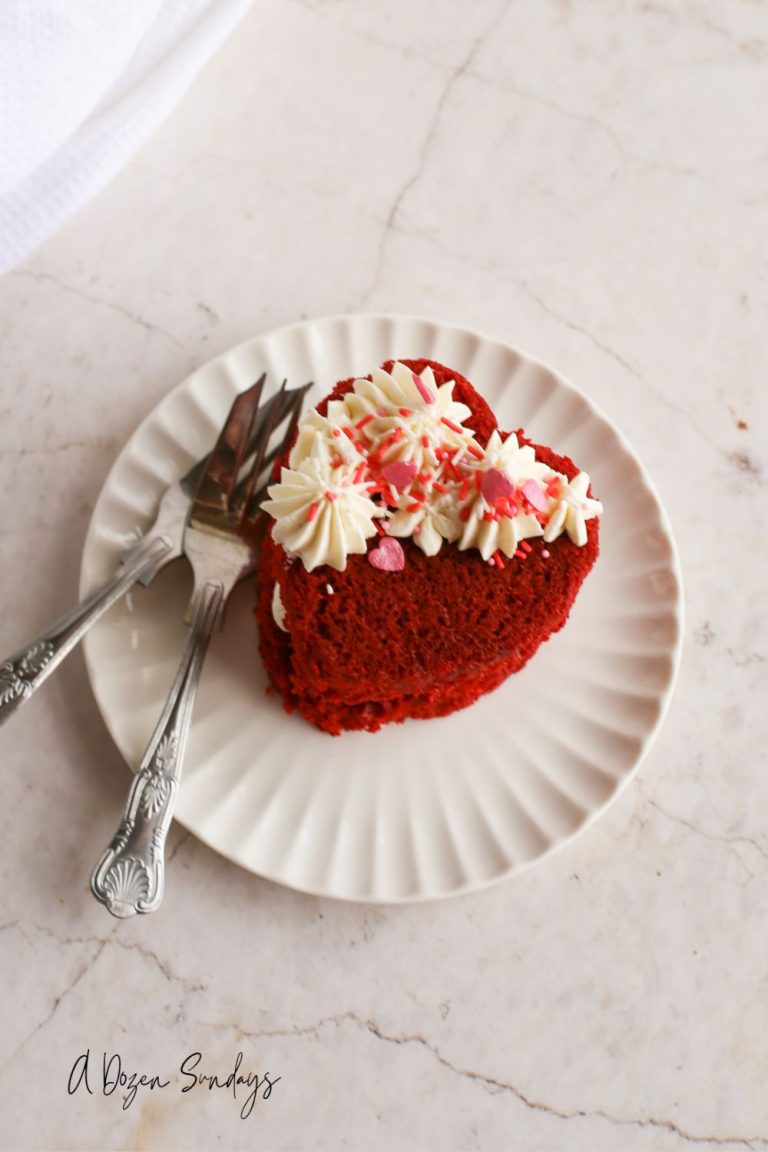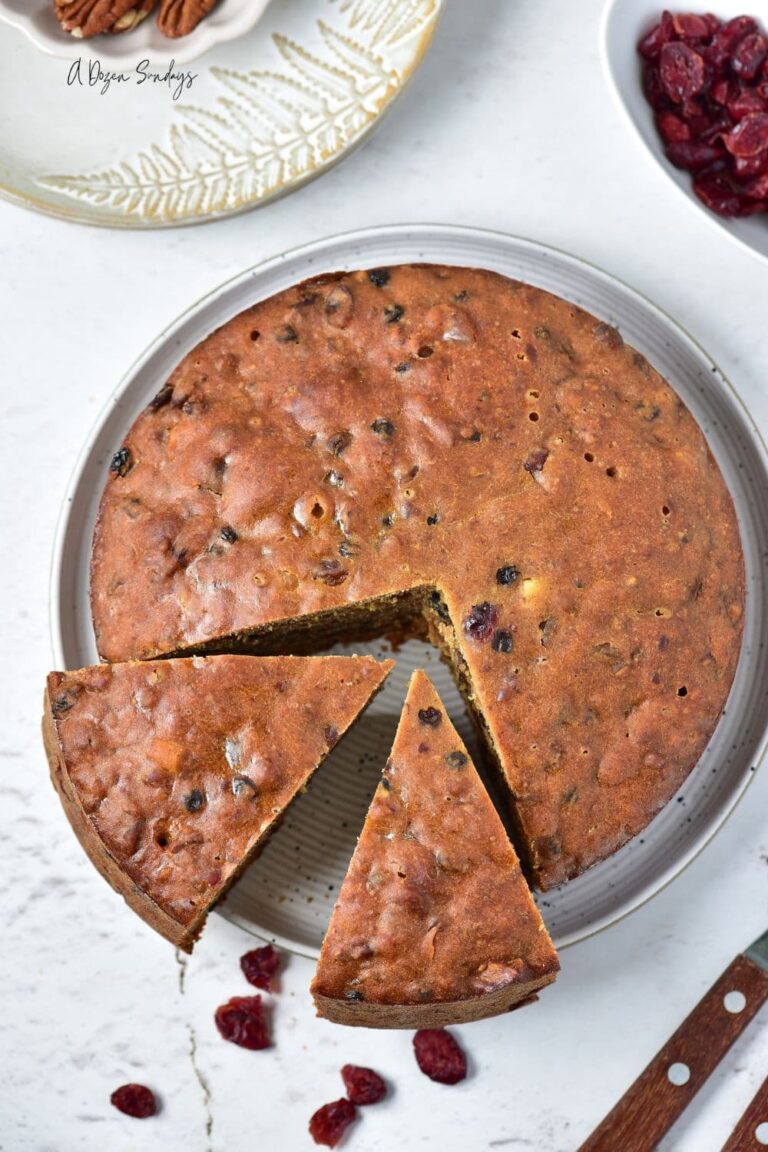Lemon Lavender Loaf Cake
This lemon lavender loaf cake is bright, buttery soft and just that little bit different – in a very good way! The fresh lemon gives it a lovely zing, while a hint of culinary lavender adds a floral note that makes it feel a bit more special than your average lemon cake. It’s simple to make, bakes beautifully in a standard loaf tin and is finished with a sharp lemon glaze that brings everything together. Perfect for spring and summer days, afternoon tea or when you want a bake that’s easy but impressive.
Here in the UK lavender starts to flower in late June/early July, so this is more of a summer cake for us. I love it when it starts blooming in the garden – so do the bees!

Why You’ll Love This Recipe
- A floral twist on a classic lemon cake – The hint of lavender takes this from basic to bakery-worthy without being overpowering.
- Lovely texture – Greek yoghurt makes the crumb tender while the mix of butter and oil keeps it moist.
- Perfect for Summer – This lemon lavender loaf cake is packed with the flavours of summer!
- Perfect for gifting – It keeps well for a few days and looks stunning with a drizzle of glaze and a sprinkle of buds or zest.
- Ideal for picnics – Pop a slice or two of this cake in your lunchbox for a perfect picnic treat.
Psst…see those links? They’re Amazon affiliate links! If you click them and purchase something, I may get a tiny commission (enough for a cuppa, maybe? ☕️) at no cost to you. I only recommend products I genuinely love, so you’re in good hands!

Ingredients Breakdown
- Caster sugar – Adds depth and sweetness. You can swap for light brown sugar if you prefer a more caramel flavour.
- Lemon zest and juice – For that unmistakable zing. The zest adds fragrance, juice brings brightness.
- Butter and olive oil – Butter gives flavour while the oil keeps it light and soft, adding moisture without being overpowering.
- Eggs – Bind everything together and add richness.
- Lavender buds – Culinary-grade only. Culinary lavender has been grown especially for cooking and baking. Don’t be tempted to use too many – a little goes a long way. You can get culinary-grade lavender online.
- Plain flour, baking powder and salt – Your dry mix base. The salt balances the sweetness and enhances the flavours.
- Greek yoghurt – Adds moisture and tang. Use full fat – don’t use low fat or 0% Greek yoghurt as it won’t work as well.
- Icing sugar and lemon juice – For the easiest lemon drizzle glaze! Keeps things sharp and fresh.

Lemon Lavender Loaf Cake
Equipment
- Baking Paper/Greaseproof Paper
- Baking Paper/Greaseproof Paper
- Small Bowl
- Whisk
Ingredients
- 170 grams unsalted butter, softened (¾ cup unsalted butter (1½ sticks))
- 180 grams caster sugar (¾ cup plus 2 tbsp granulated sugar)
- 3 large eggs
- Zest of 2 lemons
- 2 tablespoons lemon juice
- 1½ teaspoons culinary lavender, ground or finely chopped
- 190 grams self-raising flour (1½ cups self-rising flour)
- pinch fine salt
- 2-3 tablespoons milk
- 150 grams full fat Greek yoghurt (2/3 cup)
For the Glaze
- 100 grams icing sugar ( ¾ cup)
- 1½ tablespoons lemon juice
- pinch of culinary lavender for decoration optional
Instructions
- Set the oven to 170°C (fan) / 190°C / gas mark 5. Grease and line a 2lb loaf tin with baking paper.
- Add the softened butter and olive oil to the sugar and beat until light and fluffy. Mix in the eggs one at a time. Stir in the lemon juice and lavender buds.
- In a separate bowl, whisk together the flour, baking powder and salt.
- Add half the dry mix to the wet ingredients and gently fold in. Add the yoghurt, then fold in the remaining dry ingredients until just combined. Don’t overmix.
- Pour the batter into your prepared tin and smooth the top. Bake for 45–55 minutes until a skewer inserted into the centre comes out clean. Baking times vary depending on your oven. Cover loosely with foil if it starts to brown too quickly – lemon cakes do tend to brown, this is OK!
- Let the cake cool in the tin for 10–15 minutes before turning out onto a wire rack. Mix the icing sugar with just enough lemon juice to make a pourable glaze, then drizzle over the cooled cake. Top with lavender or zest if using.

Recipe Success Tips
1. Use fresh lemons
Freshly grated zest and juice make a huge difference to the flavour. Bottled lemon juice just won’t have the same zing.
2. Don’t overdo the lavender
Lavender can quickly go from subtle to soapy. Stick to the recommended amount, and make sure it’s culinary-grade. If using dried buds, grind them finely for better distribution.
3. Bring ingredients to room temperature
Room temp butter, eggs and milk mix more easily, giving you a smoother batter and a better rise.
4. Don’t overmix the batter
Mix just until everything is combined. Overmixing can make the cake dense or tough.
5. Test for doneness with a skewer
Loaf cakes can look done on the outside but be undercooked in the middle. A skewer inserted in the centre should come out clean or with just a few moist crumbs.
6. Cool before glazing
Let the cake cool completely before pouring over the lemon glaze, or it’ll melt into the sponge instead of sitting neatly on top.
7. Store it right
This loaf stays moist for a few days when wrapped in baking paper or foil. The lemon and lavender flavours deepen over time!
Why not try more summer recipes:





